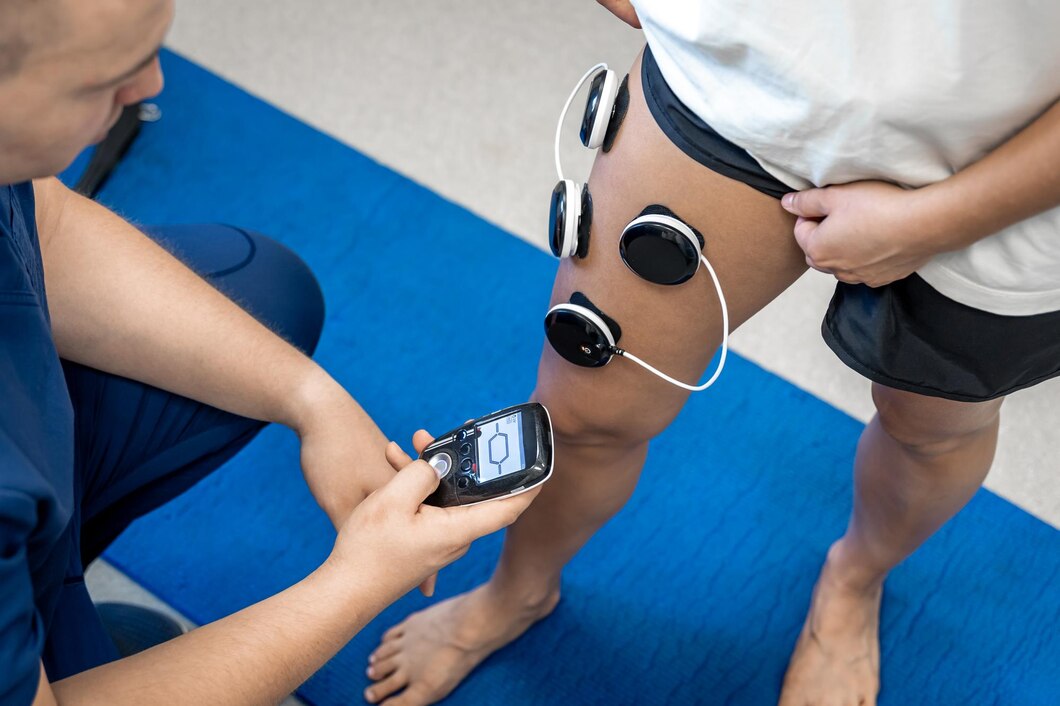Chronic pain affects millions of people worldwide, significantly impacting their quality of life. Traditional pain management approaches often include medication, physical therapy, and lifestyle changes. Biofeedback offers an alternative or complementary method by teaching individuals to control physiological processes to reduce pain.
Understanding Biofeedback
Definition and Concept:
Biofeedback is a technique that uses electronic monitoring devices to measure and provide feedback on physiological functions such as heart rate, muscle tension, and skin temperature. This information helps individuals learn to control these functions consciously.
Types of Biofeedback:
-
Electromyography (EMG):
-
Measures muscle tension and helps individuals learn to relax specific muscle groups, beneficial for conditions like tension headaches and back pain.
-
Thermal Biofeedback:
-
Monitors skin temperature, which can indicate stress levels. By learning to increase peripheral temperature, individuals can reduce stress-related pain.
-
Heart Rate Variability (HRV) Biofeedback:
-
Focuses on controlling heart rate patterns to improve emotional regulation and reduce pain perception.
-
Neurofeedback:
-
Measures brainwave activity, helping individuals modify brainwaves associated with pain and stress.
Mechanisms of Biofeedback in Pain Management
Autonomic Nervous System Regulation:
Biofeedback helps regulate the autonomic nervous system (ANS), which controls involuntary functions. By learning to control ANS responses, individuals can reduce pain signals and improve relaxation.
Muscle Relaxation:
Chronic pain often leads to muscle tension, which can exacerbate pain. Biofeedback helps individuals learn to relax muscles, reducing tension and associated pain.
Stress Reduction:
Chronic pain is frequently accompanied by stress and anxiety, which can worsen pain perception. Biofeedback techniques focus on stress reduction, indirectly decreasing pain.
Enhanced Self-Awareness:
Biofeedback increases awareness of physiological responses, enabling individuals to recognize early signs of stress or pain and take proactive measures to manage them.
Benefits of Biofeedback for Pain Management
-
Non-Invasive and Drug-Free:
Biofeedback offers a non-invasive alternative to medication, reducing the risk of side effects and dependency.
-
Personalized Treatment:
Biofeedback is tailored to individual needs, allowing for customized approaches to pain management based on specific physiological responses.
-
Empowerment and Self-Control:
By teaching self-regulation skills, biofeedback empowers individuals to take an active role in their pain management, leading to greater self-efficacy.
-
Complementary to Other Treatments:
Biofeedback can be used alongside other pain management strategies, enhancing their effectiveness and providing comprehensive care.
Applications of Biofeedback in Pain Management
-
Chronic Back Pain:
EMG biofeedback helps reduce muscle tension and improve posture, alleviating chronic back pain.
-
Migraines and Tension Headaches:
Thermal and EMG biofeedback can reduce the frequency and intensity of headaches by promoting relaxation and reducing muscle tension.
-
Fibromyalgia:
HRV biofeedback aids in managing the stress and emotional aspects of fibromyalgia, potentially reducing pain symptoms.
-
Temporomandibular Joint Disorder (TMJ):
Biofeedback techniques help relax jaw muscles, decreasing pain and improving function.
Biofeedback is a promising tool for managing chronic pain, offering a non-invasive, drug-free approach that empowers individuals to take control of their physiological responses. By understanding the mechanisms and benefits of biofeedback, patients and healthcare providers can incorporate this technique into comprehensive pain management plans, improving outcomes and quality of life.




